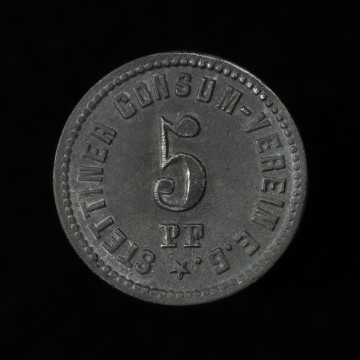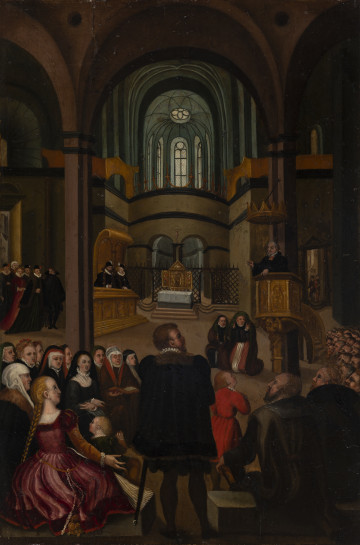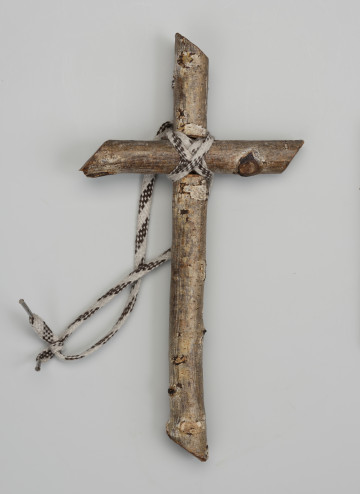
5 pfennig
1865 — 1868
National Museum in Szczecin
Part of the collection: Scrip
Dating back to antiquity, replacement money emerged almost at the same time as the invention and dissemination of silver and gold bullion money, and found widespread use over time. Not only did it replace official, full-bodied state money in times of crisis, but it was also adopted as an internal means of payment in private estates and, with economic development, also used by industrial estates and social organisations operating their own shops or canteens. In Szczecin, one of the better-known private issuers of such money was the Union of Consumers (Consum Verein). This organisation, based on the idea of a consumer cooperative, active nearly from the mid-19th century until the 1930s, many times undergoing transformations and modifying its name, issued a series of replacement money of various denominations, usually minted in zinc. The zinc coins of 1, 5 and 10 silver groschen are assumed to be the oldest, in view of the format of the organisation's name used and the denomination stated in Prussian currency, prior to the monetary reform of 1871, which was withdrawn from circulation in 1873. The featured item is the highest denomination from this series. The Union of Consumers, then already called the Szczecin Union of Consumers (Stettiner Consum-Verein E.G.), the Szczecin Union of Consumers and Saving (Stettiner Consum- & Sparverein E.G) or as the Szczecin Union of Consumers and Saving, Ltd. (Stettiner Consum u. Sparverein E.G.M.B.H.) also issued such unusual denominations as 200 or 1,000 pfennig in the pfennig-mark system in effect since 1871. Despite the fact that the Szczecin Association of Consumers and Saving had around 20,800 shareholders at the peak of its prosperity, which had to be matched by the circulation of individual issues of replacement money, some denominations, such as the aforementioned 200 and 1,000 pfennig, are now very rare and collector's items. Mieszko Pawłowski
Other names
10 silber Groschen, Notgeld
Author / creator
Object type
token coin
Technique
coining
Material
zinc
Origin / acquisition method
acquisition
Creation time / dating
Creation / finding place
Owner
Muzeum Narodowe w Szczecinie (1945- )
Identification number
Location / status

1865 — 1868
National Museum in Szczecin

3. ćwierć XVI wieku
National Museum in Szczecin

1980
National Museum in Szczecin
DISCOVER this TOPIC
National Museum in Szczecin
DISCOVER this PATH
Educational path